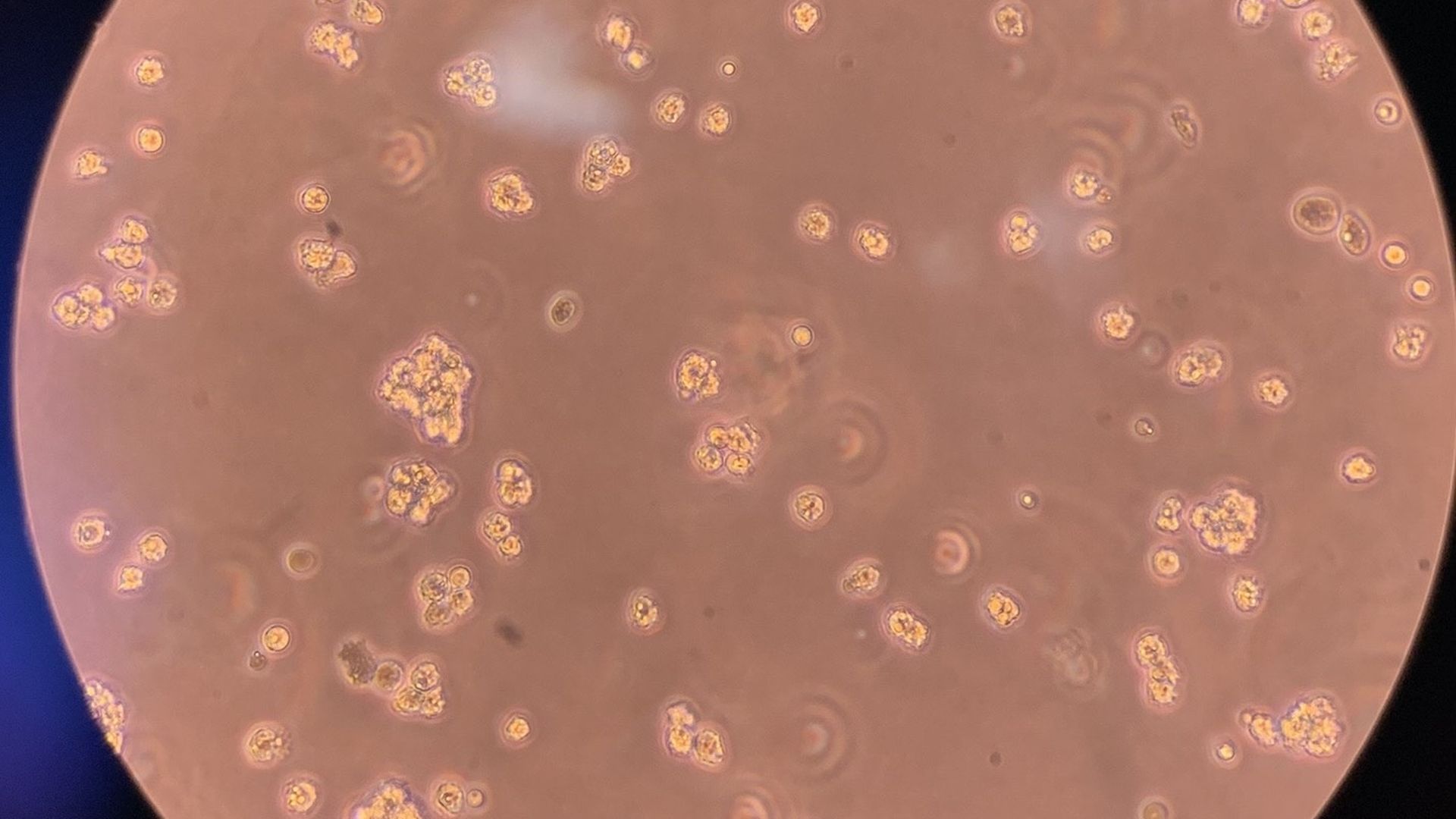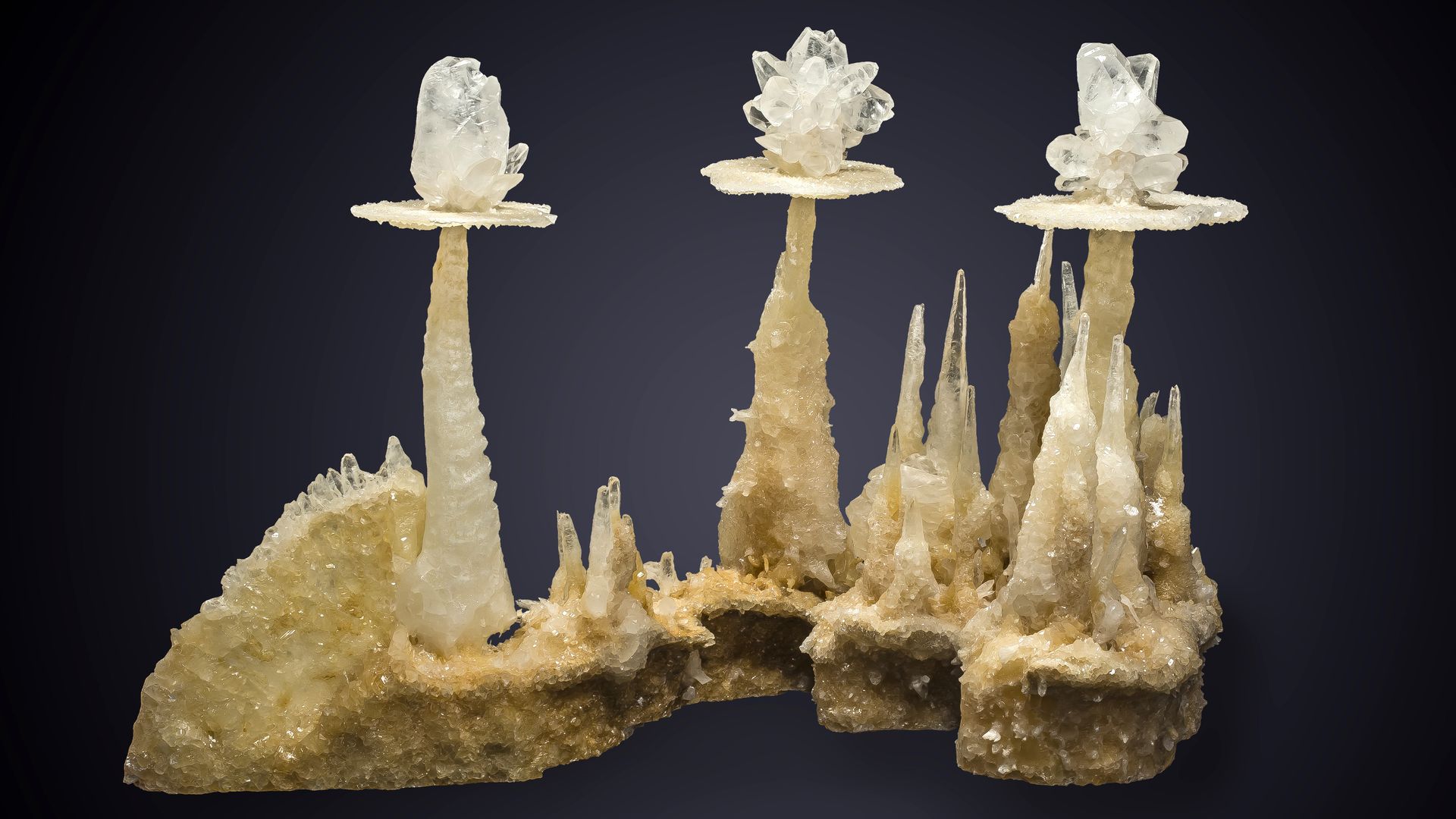| | | | | | | | | | | Axios Science | | By Alison Snyder · Jul 07, 2022 | | Thanks for reading Axios Science. This week's newsletter is 1,768 words, about a 7-minute read. | | | | | | 1 big thing: Asteroids help trace water's journey across the solar system |  | | | Illustration: Allie Carl/Axios | | | | A pair of missions to two asteroids near Earth are beginning to provide new information about when, where and in what form water first existed in the solar system. Why it matters: Water played a key role in the formation of planets — and the emergence of life that evolved on at least one world thereafter. - "Asteroids at some level were carriers of water throughout the solar system," says Kevin Walsh, a scientist at the Southwest Research Institute who studies asteroids.
- The "children and grandchildren" of these asteroids that have drifted closer to Earth can be studied to infer more about primordial asteroids that first transported water, he says.
- Signs of water can be spotted in asteroid material chemically altered when the rocks and dust interact with water.
Driving the news: NASA's OSIRIS-REx spacecraft collected about 250 grams (roughly half a pound) of rock and dust from the surface of the near-Earth asteroid Bennu in October 2020, a team of scientists that includes Walsh reports today in the journal Science. The sample will be returned to Earth next year. - Bennu is about 500 meters (1,640 feet) wide, orbits the Sun at an average distance of 105 million miles — and sometimes drifts relatively close to Earth.
- The spacecraft created a plume of debris and a 9-meter-long (30-foot) crater as it collected the sample. Analyzing both the particles kicked up in the process and the forces experienced by the spacecraft, the researchers found the material is finer, less dense and more loosely packed than the surface, Walsh and his colleagues report in a separate paper in the journal Science Advances.
- The particles landed on the spacecraft's spectrometer, giving the team an opportunity to study their infrared signals. Earlier research posited that the material is likely rich in magnesium-containing minerals formed by interactions with water, similar to some "chemically primitive" meteorites found on Earth. They report the latest analysis substantiates that.
The big picture: Small, rocky bodies like Bennu are thought to be fragments of the solar system's earliest asteroids. - Evidence suggests these early-stage asteroids formed mere tens of millions of years after the solar system's start 4.5 billion to 4.7 billion years ago when a cloud of gas and dust collapsed and formed the Sun.
- As rocks orbiting the Sun accreted in the outer solar system, ices and gases were also pulled into their mix. As the bodies grew bigger, there was more heat, more pressure, and more squeezing of rocks and fluids.
- And "very quickly these bodies became geologically active," says Harold Connolly, a professor of geology at Rowan University and co-investigator and mission sample scientist on OSIRIS-REx. Water was "an agent for change" in the early solar system that helped make planets the geologically active worlds they are today, "something life can actually evolve on," he adds.
As asteroids bashed together in the early outer solar system, bits of rocks broke off and reaccumulated to form "rubble pile" asteroids like Bennu. - It's current composition is thought to have been established on a larger carbon-rich parent asteroid within 10 million years of the solar system's start, per NASA.
- "The whole history of the solar system is tucked away in these small little rubble piles," Walsh says. "You can walk your way back to the original asteroids."
A separate mission by the Japanese space agency, JAXA, published an analysis of a sample returned from the asteroid Ryugu in late 2020. - It matched a rare type of meteorite that landed in Tanzania in 1938.
- Radioisotope dating indicates the material was altered when ice melted to water that circulated through the asteroid about 5.2 million years after the solar system formed, the team reported.
Read the entire story. |     | | | | | | 2. Catch up quick on COVID | | "An experimental drug initially developed to fight cancer cut the risk of death for people hospitalized with COVID by half," Carl Zimmer writes in the NY Times. But some experts caution more data is needed. Scientists are trying to determine the effectiveness of vaccine mandates during the pandemic, Liam Drew reports for Nature. "Counties where colleges and universities did COVID-19 testing saw fewer COVID-19 cases and deaths than ones with schools that did not do any testing in the fall of 2020," Anil Oza writes for Science News. |     | | | | | | 3. Breast milk's cellular ingredients |  | | | Single and clustered cells in breast milk. Image: John Gleeson/Carnegie Mellon University | | | | Scientists have identified the different types of cells that make up the vast majority of cells in human breast milk. Why it matters: The researchers suggest cells from the mother in breast milk could one day be engineered to deliver drugs in the body. The backstory: While she was breastfeeding her daughter a few years ago, Kathryn Whitehead, a professor of chemical and biomedical engineering at Carnegie Mellon University, used her free hand to scroll through breast milk studies on her phone. - "What really struck me as amazing is that these cells must somehow be crossing the intestine," she says. Proteins used in drug delivery are much smaller than the cells, yet the proteins are broken up in the gastrointestinal tract, making it sometimes difficult to deliver drugs orally.
- "Is there something special about these milk cells? And if there was could they be used to deliver therapeutics?"
Details: The first step is to know what types of cells are in the milk. - Using several techniques, Whitehead and her colleagues identified six different subpopulations of cells, or lactocytes, that make up more than 90% of the cells in healthy breast milk, they reported in Science Advances last week.
- Based on the genes expressed in the cells, one type appears to be stem cells (about 5% of lactocytes) that differentiate into five other cell types, including some previously unknown ones that may be involved in intestinal development and immune defense.
The big picture: Studies of breast milk have largely focused on its nutritional content and components that are part of the immune response. - "It's never been shown before that there are differences in these lactocytes," says John Gleeson, the paper's lead author who was a postdoctoral researcher at CMU at the time.
- He says knowing more about the cells could one day allow doctors to provide a particular type to infants who have necrotizing enterocolitis, a condition that may be related to having an underdeveloped intestine.
What to watch: Whitehead and her colleagues are studying which of these cell types are being absorbed by the infants — and where they go within the body, which would determine whether they are good candidates for delivering a drug. |     | | | | | | A message from Axios | | The biggest video game news delivered to your inbox | | |  | | | | Get the latest scoops, trends and news from the world of video games with Axios Gaming, delivered every weekday to your inbox. Why it matters: A crucial view into an industry that is an essential part of millions of people's lives. Subscribe for free | | | | | | 4. A massive pet "biobank" will study why cats and dogs get sick |  | | | Illustration: Annelise Capossela/Axios | | | | Help wanted: Mars Petcare is seeking 10,000 dogs and 10,000 cats for a biobank — an aggregation of biological samples, images and other data — that aims to improve the health of house pets by detecting maladies earlier, my Axios colleague Jennifer Kingson writes. Why it matters: Compared with human biobanking, animal biobanking is in its infancy. This initiative may be the largest and most ambitious so far to try to pinpoint what triggers disease in healthy pets by sifting through genomic patterns. - "The overall aim is to improve pet care of the future and health outcomes, and to improve the health span and quality of life of our pets," says Kay O'Donnell, vice president of the Waltham Petcare Science Institute, a division of Mars Petcare.
Driving the news: Mars Inc., the giant conglomerate that makes M&M's and Snickers, has a division that runs chains of veterinary hospitals and makes products like Pedigree dog food and Iams cat food. That unit recently announced the new biobank and issued a call for dogs and cats in the U.S. to participate. - Four-pawed volunteers will donate blood and fecal samples annually over 10 years — and get free vet care, genetic testing and activity trackers in return.
- Using "longitudinal physiological data from the samples collected," the study will seek to "understand the differences between pets that are healthy as they age and pets that develop diseases," Mars Petcare said in a press release.
The big picture: The animal biobanking world is getting more organized and sophisticated. - A consortium of veterinary schools that run biobanks formed in 2014 to work in partnership with medical schools on research.
Read the entire story. |     | | | | | | 5. Worthy of your time | | Inside the adolescent brain (Tim Vernimmen — Knowable) Bullying in science: largest-ever national survey reveals bleak reality (Holly Else — Nature) Medicinal plant knowledge vanishes as Indigenous languages die (Sofia Moutinho — Science, paywall) |     | | | | | | 6. Something wondrous |  | | | Calcite. Photo: Rob Lavinski | | | | Nature uses 57 ways to make the more than 5,600 minerals on Earth, scientists reported last week. Why it matters: Minerals are currently classified by their structure and composition — what they are. Adding information about how and when a mineral formed could help scientists spot signs of life on other planets and understand the origins of it here on Earth. - "If you want to know the past of Earth, then these are the time capsules, and we can open them with the information that they contain," mineralogist Robert Hazen of the Carnegie Institution for Science said, holding a more than 4.5 billion-year-old meteorite found in Morocco in his hand. In it, there are grains of minerals formed more than 5 billion years ago — before our solar system.
Details: Hazen and Shaunna Morrison, also of the Carnegie Institution of Science, compiled research about how the minerals recognized by the International Mineralogical Association formed — under high or low temperatures, with or without water, with an assist from microbes or not. - They found nature has 57 ways to make minerals — some involving lightning, penguin urine, microbes, volcanoes, plate tectonics, stars and more.
- About 60% of the minerals found on Earth form one way, and 24% can form in two ways.
- But nine minerals can be made in more than 15 ways. There are 21 paths to pyrite (fool's gold) — the most of any mineral.
- Under their system, which is detailed in two papers published last week in the journal American Mineralogist, there are more than 10,550 "mineral kinds" on Earth. They say the classification system — the culmination of 15 years of work for Hazen — is a complement to the existing one.
They also found water is key. It helped to form more than 80% of minerals. Biological processes had a role in forming about half of minerals. - Knowing the markers of a mineral produced by microbes or water could help scientists spot those signs of life in the minerals of other worlds.
The intrigue: More than 42% of minerals are formed with the involvement of rare elements, which are less than 5 parts per million of Earth's crust. - That suggests Earth "has an incredible ability to select and concentrate rare elements through water-rock interactions," Hazen said, adding those interactions give "an incredible burst of diversity."
|     | | | | | | A message from Axios | | The biggest video game news delivered to your inbox | | |  | | | | Get the latest scoops, trends and news from the world of video games with Axios Gaming, delivered every weekday to your inbox. Why it matters: A crucial view into an industry that is an essential part of millions of people's lives. Subscribe for free | | | | Many thanks to Laurin-Whitney Gottbrath for editing this week's newsletter, to Allie Carl on the Axios Visuals team and to Amy Stern for copy editing this edition. Editor's note: The first item in last week's newsletter was corrected to say that Grail's multi-cancer screening test is available through prescription (not direct-to-consumer). |  | | Are you a fan of this email format? It's called Smart Brevity®. Over 300 orgs use it — in a tool called Axios HQ — to drive productivity with clearer workplace communications. | | | | | | Axios thanks our partners for supporting our newsletters. If you're interested in advertising, learn more here.
Sponsorship has no influence on editorial content. Axios, 3100 Clarendon Blvd, Arlington VA 22201 | | | You received this email because you signed up for newsletters from Axios.
Change your preferences or unsubscribe here. | | | Was this email forwarded to you?
Sign up now to get Axios in your inbox. | | | | Follow Axios on social media:    | | | | | |








No comments:
Post a Comment